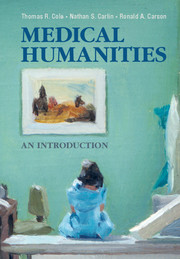Book contents
19 - World Religions forMedical Humanities
from Part IV - Religion and Medicine
Summary
The fact that religion can be and often remains divisive is not a good reason for excluding it from the conversation.
– David SmithMedicine needs a scientific basis – but it also needs a soul.
– Daniel SulmasyAbstract
This chapter explores the world’s five great religious traditions: Hinduism, Buddhism, Judaism, Islam, and Christianity. Beginning with a discussion of some of the challenges involved in cultural competency education, it examines why it is important to address religion and spirituality in patient care in general; the central tenets of each religious tradition; and the ways in which these tenets often inform peoples’ understanding of health and illness. Then, with a focus on clinical practice, it considers three ways of addressing religion and spirituality in patient care.
INTRODUCTION
What should one do when a patient who is a Jehovah’s Witness refuses a life-saving blood transfusion? How can one make sense of the heated debates among Roman Catholics and secular bioethicists on the ethics of end-of-life care? What should health care professionals know about the world’s religious traditions? These types of questions often fall under the rubric of cultural competency education, which has become increasingly common in health professional schools. There are a number of guides or textbooks on the topic. Many of these define “culture” and “cultural competency” in some way, provide a model of cultural competency (e.g., the Purnell Model for Cultural Competence), and then apply that model to various groups such as “People of German Heritage,” “People of South Asian Heritage,” and “People of African Heritage” to derive clinically relevant material for health care professionals. Such models often report whether, for example, a disease is more prevalent in a given group or whether certain cultural assumptions or behaviors are likely to be in conl ict with Western biomedicine.
- Type
- Chapter
- Information
- Medical Humanities , pp. 294 - 313Publisher: Cambridge University PressPrint publication year: 2014



